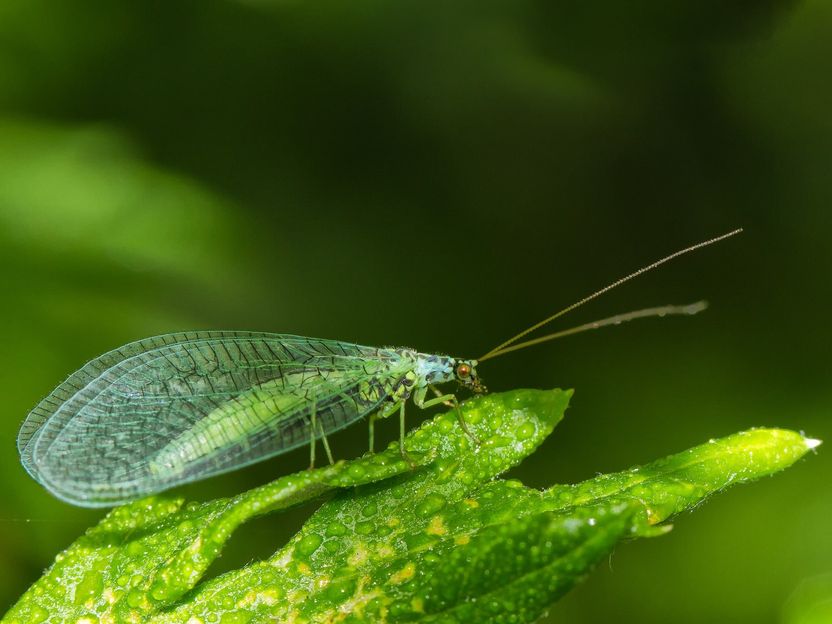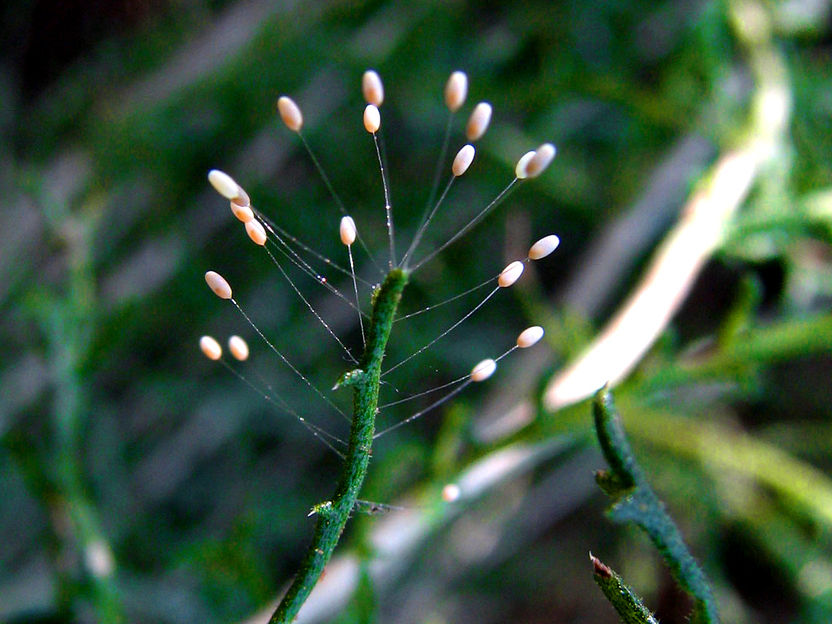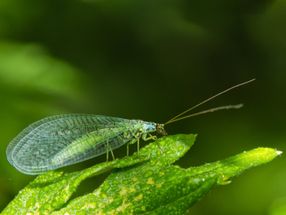Biofibers from green lacewing silk
Advertisement
Innovative biofibers made from a silk protein of the green lacewing are being developed at the Fraunhofer Institute for Applied Polymer Research IAP in conjunction with the company AMSilk GmbH. Researchers are working on producing the protein in large quantities by using biotechnology. The aim is to use the material in the future as a high-grade rigid fiber, for example, in lightweight plastics in transportation technology. It can also be conceivably used in medical technology, for example, as a biocompatible silk coating on implants.

Green lacewing
artsehn, pixabay.com, CC0

The mechanical properties of the green lacewing egg stalks are so remarkable that researchers would like to replicate them in technical fibers.
Wikimedia Commons, Karthik R. Bhat


In order to protect their offspring from being eaten by predators near the ground, green lacewings deposit their eggs on the underside of leaves – on the ends of stable silk threads. These so-called egg stalks are only around 15 micrometers thick and can easily hold the weight of the eggs. In order to produce these impressive fibers, the green lacewing excretes a protein secretion onto the leaf. The egg is then laid in the droplet and perpendicularly pulled out from the leaf. The resulting silk thread then hardens in the air.
»Unlike most other types of silk, the green lacewing’s egg stalk has a special structure with fascinating mechanical properties: green lacewing silk is extremely rigid and stable. We would like to transfer these special properties to fibers made from this silk. However, until now it has not been possible to produce this type of silk protein in sufficient quantities and purities, « explains Martin Schmidt, biotechnologist at the Fraunhofer IAP in Potsdam-Golm. In a joint project with the company AMSilk GmbH, the researcher is working on manufacturing large amounts of green lacewing silk protein with the aid of bacteria using a biotech process. A team led by Professor Thomas Scheibel from the Chair of Biomaterials at the University of Bayreuth conducted the preliminary molecular-biological work. They constructed a special gene sequence which enables bacteria to produce the silk protein. Martin Schmidt is now optimizing the manufacturing process at the Fraunhofer IAP so that the silk protein can be produced inexpensively on an industrial scale. After this step it will be possible to develop the material.
AMSilk supports the project by conducting molecular biological work and by contributing its wide-ranging expertise in the field of silk analysis and production. The medium-sized company from Martinsried has been successfully developing silk-based biopolymers for various applications for years. »We have been able to establish our silk technology and our first products are already available on the market. While the Biosteel® fiber we use is modeled after spider silk and is more soft and flexible, green lacewing silk is very rigid. This special property makes it interesting for medical technology and as a reinforcement fiber in lightweight engineering, for example in cars, airplanes or ships. We are pleased to be working in partnership with the Fraunhofer IAP, which is able to lend its expertise to this project in every area – from the development of the silk material to the finished fiber, « explains Dr. Lin Römer, scientific director of AMSilk. The project is being funded by the Agency for Renewable Resources (FNR), a project management organization of the Federal Ministry of Food and Agriculture.
For 25 years the Fraunhofer IAP has specialized in the development and characterization of fibers and fiber-reinforced composites for lightweight engineering and in the development of biobased polymers. At the institute’s own spinning plant, technical fibers can be manufactured on an industrial scale either from a solution or a melt. »Combining biotechnology and polymer research under one roof creates ideal conditions to produce fibers made from green lacewing silk. This is an enormous advantage for the development of innovative fields of application, « says Schmidt.
















































